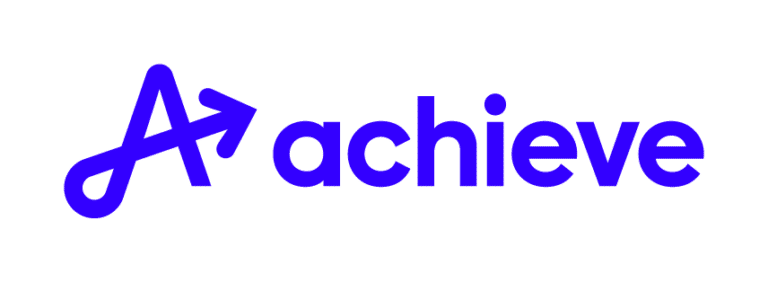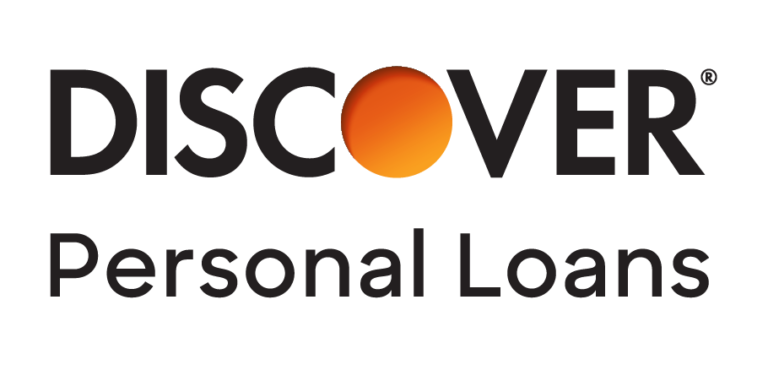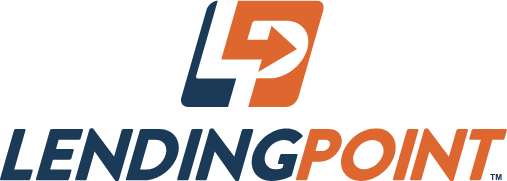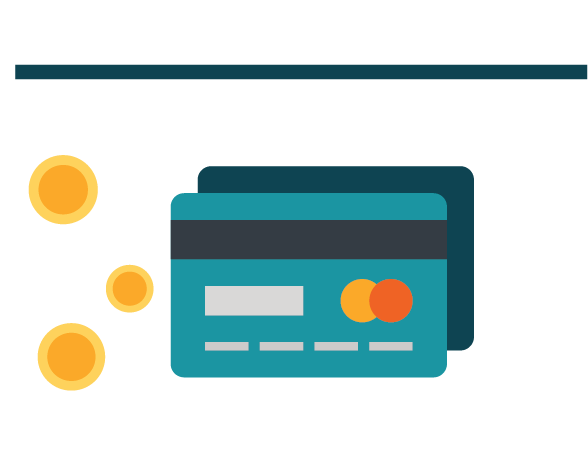Our goal is to give you the tools and confidence you need to improve your finances. Although we receive compensation from our partner lenders, whom we will always identify, all opinions are our own. Credible Operations, Inc. NMLS # 1681276, is referred to here as "Credible."
If you need to cover unexpected expenses or ongoing projects, a personal line of credit might be a good option. A personal line of credit lets you repeatedly tap into and pay off your credit line, giving you flexibility when you need it.
Here’s what you should know about personal lines of credit and how they work:
- What is a personal line of credit?
- Where to get a personal line of credit
- How a personal line of credit works
- When to use a personal line of credit
- Drawbacks to personal lines of credit
- Using a personal loan as a personal line of credit alternative
- Other personal line of credit alternatives
- Beware of predatory lending
What is a personal line of credit?
Like a credit card, a personal line of credit is a form of revolving credit. That means it’s reusable. You’re pre-approved to borrow money when you need it, right up to a predetermined borrowing limit.
When you pay down debt, you have more room to borrow up to your limit again.
Just like personal loans, personal lines of credit may be secured or unsecured. An unsecured line of credit doesn’t require any collateral. But you can often get a better interest rate — and a bigger loan — with secured loans if you use property as collateral.
Revolving lines of credit can be secured by:
- Your home: If you’re a homeowner, you might be able to tap into your home’s equity by opening a Home Equity Line of Credit (HELOC). Just keep in mind that because a HELOC is secured by your home, you risk losing it if you can’t keep up with your payments.
- A bank savings account or Certificate of Deposit (CD): With this option, you’ll use your savings account or CD as collateral for a line of credit. Because there’s less risk to the lender, you might be able to get a lower interest rate or higher credit limit — but your savings could also be seized by the lender if you fail to make your payments.
This comparison table can help you decide when to use a personal loan, credit card, or personal line of credit.
| Best uses | Loan amount | |
|---|---|---|
| Personal loan |
| Up to $100,000 |
| Credit card | Essentials | $10,000 limit is typical |
| Unsecured line of credit | Unpredictable or ongoing expenses | Up to $100,000 |
| Secured line of credit (CD or savings account) | Ongoing expenses | Up to $250,000 |
| Home equity line of credit (HELOC) | Home improvement | Up to 85% of home’s appraised value (minus first mortgage) |
If you decide to take out a personal loan, it’s a good idea to consider how much the loan will cost you over time. You can estimate how much you’ll pay for a loan using our personal loan calculator below.
Enter your loan information to calculate how much you could pay
With a $ loan, you will pay $ monthly and a total of $ in interest over the life of your loan. You will pay a total of $ over the life of the loan.
Need a personal loan?
Compare rates without affecting your credit score. 100% free!
Checking rates won’t affect your credit score.
Where to get a personal line of credit
Personal lines of credit aren’t offered by some big banks, like Chase and Bank of America. But it’s not hard to find a bank or credit union that offers secured or unsecured lines of credit to their customers.
For example, if you already use Citibank for your personal banking, personal finance, or wealth management needs, you might be eligible for a lower rate on a personal line of credit.
Here are some features of personal credit lines offered by banks and credit unions:
| Loan amount | Annual or origination fee | Relationship discount | |
|---|---|---|---|
| Citibank | $1,500 to $25,000 | $50 annual fee (waived if you take a loan or make a payment) | 0.25% |
| PenFed Credit Union | Up to $50,000 | Check with lender | Check with lender |
| PNC Bank | $1,000 to $25,000 | Check with lender | 0.25% |
How a personal line of credit works
A personal line of credit is a type of revolving credit. This type of credit lets you tap into funds multiple times rather than getting the money as a lump sum.
If you qualify for a personal line of credit, you’ll have access to your money through a draw period, which is a set amount of time you’re allowed to withdraw money from your account.
Draw periods usually last a few years, during which you often have the option of only making minimum payments when you borrow.
Here are a few things to keep in mind when it comes to personal credit lines:
- Draw period: After the draw period ends, you’ll start the repayment period in which you’ll start paying off the full balance and any accrued interest.
- Interest accrual: Interest charges begin to accrue when you start to withdraw money, and you’ll need to make at least the minimum payments to continue having access to your line of credit.
- Interest rate type: Personal lines of credit tend to have a variable annual percentage rate (APR), with an initial rate that’s based on your creditworthiness. Typically, the higher your credit score, the lower your APR. Some lenders offer lines of credit with fixed rates, and you might also have the option of converting a variable-rate line of credit to a fixed interest rate later on.
Learn More: Comparing Credit Score Ranges
How to get a personal line of credit
The process for getting a personal line of credit is similar to applying for a new personal loan or credit card. Depending on the lender, you might be able to apply online, at a branch office, or over the phone.
If you’re ready to apply for a personal line of credit, follow these steps:
- Review your credit. You’ll typically need good to excellent credit to qualify for a line of credit. A good credit score is usually considered to be 700 or higher.
- Shop around and compare lenders. Be sure to compare as many lenders as possible to find a line of credit that fits your needs. Consider rates, draw periods, and any fees charged by the lender. Many lenders let you check your eligibility and rates with a soft credit inquiry, which won’t affect your credit score.
- Gather necessary information and documentation. You’ll typically need to submit your income and employer information to show the lender that you can afford a new credit line. You might also be asked to submit proof of assets, as some lenders require you to have a set amount to qualify for a loan.
- Fill out the application. Once you decide which line of credit option you like best, you’ll need to complete the full application and submit your documentation. Keep in mind that before you submit the application, the lender will ask you to authorize a hard credit inquiry, which could take up to five points off of your credit score. This credit score impact usually lasts for only a few months, after which your score will likely bounce back.
If you have poor or fair credit, it might be a better idea to consider another type of loan instead, such as a:
- Secured credit card: With this type of credit card, you’ll place a deposit that will be both security for the loan as well as the amount of your credit limit. In many cases, card issuers will allow you to switch your secured card over to a standard, unsecured credit card after you make a number of consecutive, on-time payments.
- Secured personal loan: Unlike unsecured personal loans, secured personal loans require collateral — for example, a vehicle or jewelry. Because there’s less risk to the lender, you could have an easier time qualifying for a secured personal loan compared to other options. Additionally, rates tend to be lower on secured personal loans than unsecured loans.
- Unsecured personal loan: While you’ll typically need good to excellent credit to qualify for an unsecured personal loan, several lenders offer personal loans for bad credit. Just keep in mind that these loans tend to come with higher rates compared to good credit loans — though your rate might still be lower than what you’d get on an unsecured line of credit.
Check Out: What is a Flex Loan? | Flex Loan vs. Personal Loan
When to use a personal line of credit
A personal line of credit is usually best suited for long-term needs where you don’t have a fixed cost. Here are a few scenarios where a personal line of credit could make sense:
- Home renovations: If you’re renovating a home or adding onto a house, you might not know the exact cost of your repairs. Unexpected expenses might also pop up as you start the work. Unlike a home improvement loan (which comes with a fixed amount), a personal line of credit lets you repeatedly draw on and pay off your credit line to cover additional costs.
- Seasonal cash flow: If you’re an entrepreneur, freelancer, or business owner who experiences seasonal cash flow variations, a personal line of credit could help tide you over until your income increases. Because you can use a line of credit multiple times, you can use it to pay for necessary expenses when your income dips during your off-season.
- Medical expenses: Costs for medical procedures can fluctuate based on your recovery time and needs. A personal line of credit gives you the flexibility to take out money for extra costs that you might not have anticipated.
Learn More: Everything You Need to Know About PNC Student Loans
Drawbacks to personal lines of credit
If you’re considering a personal line of credit, it’s also important to think about potential drawbacks. Here are a few to keep in mind:
- Higher interest rates: Unsecured personal lines of credit generally have higher interest rates compared to personal loans and other types of installment loans. This means you’ll likely pay more in interest charges over time as you draw on your credit line.
- Variable rates: Personal lines of credit typically come with variable interest rates, so your rate could fluctuate over time. If your rate goes up, your payments could also increase, which could make it difficult to budget for.
- Could lead to more debt: Because personal lines of credit give you continual access to funds, you might be tempted to overspend. But once the draw period ends and you have to start making payments, you’ll have to pay interest on whatever amount you used.
Using a personal loan as a personal line of credit alternative
While personal lines of credit can be useful, they’re not for everyone. In some cases, you might be better off with a personal loan.
Personal loans also come with fixed payments, interest rates, and repayment terms, so you’ll know exactly when you’ll repay the loan. Most personal loans are unsecured, so you won’t have to worry about collateral.
Generally, a personal loan might be a better option than a line of credit if you have a fixed expense.
For example, if you’re paying for a wedding or want to consolidate debt, a personal loan is likely the better choice since you’ll know upfront how much money you need.
But if you want repeated access to a credit line or have ongoing expenses, a personal line of credit might better suit your needs.
If you decide to take out a personal loan, be sure to consider as many lenders as you can to find the right loan for you. Credible makes this easy — you can compare your prequalified rates from our partner lenders in the table below in two minutes.
| Lender | Fixed rates | Loan amounts | Min. credit score | Loan terms (years) |
|---|---|---|---|---|
 | 7.99% - 29.99% APR | $7,500 to $50,000 | Not disclosed by lender | 2, 3, 4, 5 |
|
||||
 | 9.95% - 35.99% APR | $2,000 to $35,000** | 550 | 2, 3, 4, 5* |
|
||||
 | 8.24% - 18.99% APR | $10,000 to $50,000 | 730 | 3, 4, 5, 6 |
|
||||
 | 6.99% - 35.99% APR | $2,000 to $50,000 | 600 | 2, 3, 4, 5 |
|
||||
 | 7.99% - 24.99% APR | $2,500 to $40,000 | 660 | 3, 4, 5, 6, 7 |
|
||||
 | 7.95% - 29.99% APR | $5,000 to $40,000 | 640 | 2, 3, 4, 5 |
|
||||
 | 7.04% - 35.99% APR | $1,000 to $40,000 | 660 | 3, 5 |
|
||||
 | 7.99% - 35.99% APR | $2,000 to $36,500 | 660 | 2, 3, 4, 5, 6 |
|
||||
 | 6.49% - 25.29% APR with autopay | $5,000 to $100,000 | 700 | 2, 3, 4, 5, 6, 7 (up to 12 years for home improvement loans) |
|
||||
 | 18.0% - 35.99% APR | $1,500 to $20,000 | 540 | 2, 3, 4, 5 |
|
||||
 | 8.49% - 17.99% APR | $600 to $50,000 (depending on loan term) | 760 | 1, 2, 3, 4, 5 |
|
||||
| 8.74% - 35.49% APR10 | $5,000 to $100,000 | Does not disclose | 2, 3, 4, 5, 6, 7 | |
|
||||
 | 11.69% - 35.99% APR7 | $1,000 to $50,000 | 560 | 3, 5, or 7 years 8 |
|
||||
 | 7.74% - 35.99% APR | $1,000 to $50,000 | 600 | 2, 3, 5, 6 |
|
||||
 | 6.6% - 35.99% APR4 | $1,000 to $50,0005 | 620 | 3 or 5 years4 |
|
||||
Other personal line of credit alternatives
Opening a personal line of credit can help you deal with unexpected ups and downs in your income and expenses. But a lot depends on your specific situation and needs.
A personal line of credit might not always be the right choice. Here are some situations when you might want to consider an alternative:
If you want to consolidate debt
A personal loan could be a better option for consolidating debt compared to a line of credit.
For example, if you’ve racked up a lot of high-interest credit card debt, you might be able to pay it off with a personal loan at a lower interest rate.
If you need to do a major home renovation
If you’re planning a costly, major home renovation like an addition or rebuilding your foundation, a home equity loan or cash-out mortgage refinance might be a better choice.
If you need help paying for essentials
If you need short-term help paying for essentials like groceries or child care that usually fit into your monthly budget, pulling out your credit card might save you money.
As long as you pay your balance off in full every month, you won’t see interest charges rack up.
If you have unexpected medical bills
If you’ve got an unexpected, one-time medical bill from an unexpected accident or illness, a personal loan can be a better choice.
Since you know exactly how much you need to borrow, there’s no need to pay a higher interest rate for the convenience of a revolving line of credit.
If you want to buy a car
If you’re looking to buy a car, a personal line of credit likely isn’t the best financing option. Generally, an auto loan is a better choice, especially since you’ll typically get a much lower interest rate.
Beware of predatory lending
Unfortunately, there are plenty of predatory lenders and scammers looking to take advantage of people desperate for a loan, especially those with poor credit who have limited borrowing options. Whether you decide to get a line of credit or another type of loan, it’s critical to only work with legitimate, vetted lenders.
Here are some red flags of predatory lending to watch out for:
- Poor consumer reviews: If the overwhelming majority of reviews for a lender are negative, there’s a good chance the lender is predatory.
- Seems too good to be true: If a lender pushes you to borrow more than what you asked for, promises to skip a credit check, or otherwise flouts common lending practices, it could be a predatory lender. Trust your gut — if it seems too good to be true, it probably is.
- No mention of APR or fees: A lender should always clearly disclose their rates and terms. Predatory lenders, on the other hand, might try to bury this information in fine print so you don’t realize what you’re agreeing to. In many cases, these predatory loans come with extremely high rates and fees that can trap you in an ongoing debt cycle.
About Rates and Terms: Rates for personal loans provided by lenders on the Credible platform range between 5.20%-35.99% APR with terms from 12 to 144 months. Rates presented include lender discounts for enrolling in autopay and loyalty programs, where applicable. Actual rates may be different from the rates advertised and/or shown and will be based on the lender’s eligibility criteria, which include factors such as credit score, loan amount, loan term, credit usage and history, and vary based on loan purpose. The lowest rates available typically require excellent credit, and for some lenders, may be reserved for specific loan purposes and/or shorter loan terms. The origination fee charged by the lenders on our platform ranges from 0% to 12%. Each lender has their own qualification criteria with respect to their autopay and loyalty discounts (e.g., some lenders require the borrower to elect autopay prior to loan funding in order to qualify for the autopay discount). All rates are determined by the lender and must be agreed upon between the borrower and the borrower’s chosen lender. For a loan of $10,000 with a three year repayment period, an interest rate of 7.99%, a $350 origination fee and an APR of 11.51%, the borrower will receive $9,650 at the time of loan funding and will make 36 monthly payments of $313.32. Assuming all on-time payments, and full performance of all terms and conditions of the loan contract and any discount programs enrolled in included in the APR/interest rate throughout the life of the loan, the borrower will pay a total of $11,279.43. As of October 9, 2023, none of the personal loan lenders on our platform require a down payment nor do they charge any prepayment penalties.






